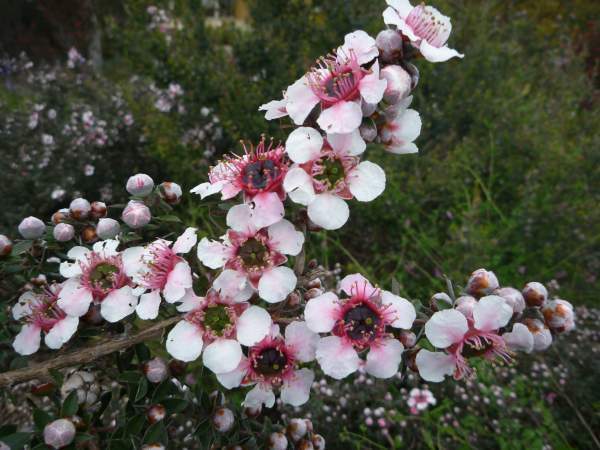Array
(
[0] => Array
(
[id] => 202
[is_published] => 1
[websiteID] => 5
[url] => /gardening/native-grasses-dianellas-and-lomandras.php
[page_status] => Published
[number_of_ads] => 5
[can_use_editor] => 1
[last_modified_date] => 2013-09-16 00:00:00
[last_modified_by] => Alan
[checked_for_duplicate_content] =>
[title] => Native grasses and friends
[heading] => Native grasses and friends
[meta_description] => An exciting thing is happening in the world of Australian plants. Wild species that have tantalised gardeners in the past are now being improved to create a diverse palette of new varieties that offer all kinds of advantages. In particular, the necessity for water-wise, low maintenance gardens has inspired interest in plants that can be used as ground covers that will not only suppress weeds and erosion but also look fantastic.
[article_category_1] => Gardening
[article_category_2] =>
[article_category_3] =>
[article_category_4] =>
[article_category_5] =>
[business_category_1] => Landscaper
[business_category_2] => Nursery
[business_category_3] => Garden Designer
[business_category_4] => Landscape Architect
[business_category_5] =>
[number_of_google_mrecs] =>
[show_google_ad_bottom_of_page] =>
[show_get_quotes_top_of_page] =>
[show_get_quotes_rhs_of_page] =>
[show_directory_search_widget] =>
[show_trending_content_widget] =>
[show_facebook_widget] =>
[show_further_reading_section] => 1
[show_sponsors_section] => 0
[show_top_article_ad] => 1
)
[1] => Array
(
[id] => 577
[is_published] => 1
[websiteID] => 5
[url] => /gardening/top-plants-for-hedges-and-screens.php
[page_status] => Published
[number_of_ads] => 2
[can_use_editor] => 1
[last_modified_date] => 2014-01-29 00:00:00
[last_modified_by] => Alan Bron
[checked_for_duplicate_content] =>
[title] => Top plants for hedges and screens
[heading] => Top plants for hedges and screens
[meta_description] => Hedges and screens in gardens create privacy or screen out an unwanted view. Learn about which plants are best for this.
[article_category_1] => Gardening
[article_category_2] => Landscaping
[article_category_3] =>
[article_category_4] =>
[article_category_5] =>
[business_category_1] => Landscaper
[business_category_2] => Garden Supplies
[business_category_3] =>
[business_category_4] =>
[business_category_5] =>
[number_of_google_mrecs] => 0
[show_google_ad_bottom_of_page] => 0
[show_get_quotes_top_of_page] => 0
[show_get_quotes_rhs_of_page] => 0
[show_directory_search_widget] => 0
[show_trending_content_widget] => 1
[show_facebook_widget] => 1
[show_further_reading_section] => 1
[show_sponsors_section] => 1
[show_top_article_ad] => 1
)
[2] => Array
(
[id] => 454
[is_published] => 1
[websiteID] => 5
[url] => /gardening/growing-banksias.php
[page_status] => Published
[number_of_ads] => 10
[can_use_editor] => 1
[last_modified_date] => 2013-09-16 00:00:00
[last_modified_by] => Alan
[checked_for_duplicate_content] =>
[title] => Growing Banksias
[heading] => Growing Banksias
[meta_description] => Learn how to grow Banksia in your garden.
[article_category_1] => Gardening
[article_category_2] =>
[article_category_3] =>
[article_category_4] =>
[article_category_5] =>
[business_category_1] => Landscaper
[business_category_2] => Nursery
[business_category_3] => Garden Designer
[business_category_4] => Landscape Architect
[business_category_5] =>
[number_of_google_mrecs] =>
[show_google_ad_bottom_of_page] =>
[show_get_quotes_top_of_page] =>
[show_get_quotes_rhs_of_page] =>
[show_directory_search_widget] =>
[show_trending_content_widget] =>
[show_facebook_widget] =>
[show_further_reading_section] => 1
[show_sponsors_section] => 0
[show_top_article_ad] => 1
)
[3] => Array
(
[id] => 200
[is_published] => 1
[websiteID] => 5
[url] => /gardening/native-annuals-and-perennials.php
[page_status] => Published
[number_of_ads] => 5
[can_use_editor] => 1
[last_modified_date] => 2013-09-16 00:00:00
[last_modified_by] => Alan
[checked_for_duplicate_content] =>
[title] => Native Annuals and Perennials
[heading] => Native Annuals and Perennials
[meta_description] => Australian annual and perennial plants can be used to create excitement in your garden as they are quick growing, usually very floriferous and because they are relatively temporary they can be replaced on a regular basis to add something new each year.
[article_category_1] => Gardening
[article_category_2] =>
[article_category_3] =>
[article_category_4] =>
[article_category_5] =>
[business_category_1] => Landscaper
[business_category_2] => Nursery
[business_category_3] => Garden Designer
[business_category_4] => Landscape Architect
[business_category_5] =>
[number_of_google_mrecs] =>
[show_google_ad_bottom_of_page] =>
[show_get_quotes_top_of_page] =>
[show_get_quotes_rhs_of_page] =>
[show_directory_search_widget] =>
[show_trending_content_widget] =>
[show_facebook_widget] =>
[show_further_reading_section] => 1
[show_sponsors_section] => 0
[show_top_article_ad] => 1
)
)
Helpful articles
Native grasses and friends. An exciting thing is happening in the world of Australian plants. Wild species that have tantalised gardeners in the past are now being improved to create a diverse palette of new varieties that offer all kinds of advantages. In particular, the necessity for water-wise, low maintenance gardens has inspired interest in plants that can be used as ground covers that will not only suppress weeds and erosion but also look fantastic.
Top plants for hedges and screens. Hedges and screens in gardens create privacy or screen out an unwanted view. Learn about which plants are best for this.
Growing Banksias. Learn how to grow Banksia in your garden.
Native Annuals and Perennials. Australian annual and perennial plants can be used to create excitement in your garden as they are quick growing, usually very floriferous and because they are relatively temporary they can be replaced on a regular basis to add something new each year.
Plant description
Leptospermum Mesmer Eyes is a low spreading shrub that makes a great screen plant, and is a spectacular sight in spring when it flowers. Upright habit with small mid-green leaves and stunning large white flowers that age to pink. Perfect for pot culture or as a feature plant in the garden. A naturally neat grower, it can be pruned to the desired height and shape. Likes a sunny spot in moist soil.
Further reading: Hedges and
Pruning a hedge in 7 steps (articles written by horticulturalist Angus Stewart).
Additional plant information
Flowers
Flower colour: white, pink
Flowering season: spring
Plant size
Maximum height: 1.5 metres
Minimum height: 1 metres
Maximum width: 1.5 metres
Minimum width: 1 metres
Sunlight, frost & salt tolerance
This plant will tolerate full or partial sunlight.
Light frost tolerance.
Plant is not salt tolerant.
Fauna attracting?
Yes. Attracts: Butterflies, insects.
Climate
This plant species will grow in the following climates: cool, temperate, subtropical.
Soil types & conditions
Loam: wet, moist, well-drained.
Clay: moist, well-drained.
Sand: wet, moist.
Soil pH: 5.5-6.5
Pests
Scale
Miscellaneous information
Native to: Australia.
Planting season: Any.
Types of fertiliser: Good general purpose fertiliser.
Find a nursery
Search for another plant







